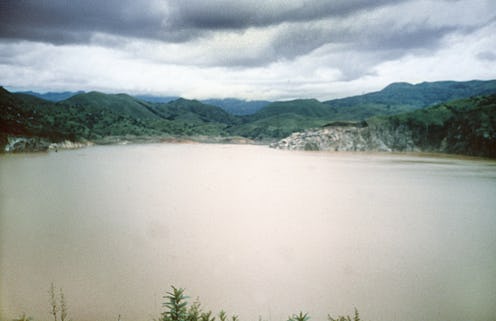Life
The 6 Scariest Real Things On The Planet
You don't have to be a horror fan to understand why the most effective stories are rooted in reality. No matter how many victims Jigsaw kidnaps or how creatively Leatherface uses his chainsaw, the scariest real things on Earth are far more likely to inspire dread than the stories we tell each other over a campfire — not that this really helps when you're eyeing your closet door at 3 a.m. because you watched The Babadook before bed. In the end, however, fictional horror is still fictional. It can (and probably will) keep you up night after night, but the bogeyman isn't actually going to creep out from under your bed the second you close your eyes.
That's what makes the real stuff so much scarier and, if you're fascinated by the strange and unusual, more fun to read about. When Reddit user ardiff1 asked their fellow users to list the "scariest real thing on our earth," the resulting thread flooded with responses. In less than a day, the post gathered more than 2,000 comments as people kept coming up with unsettling phenomena — natural disasters, diseases, sites of mass extinctions, and more. If you're prepared to lose an hour or two to a Wikipedia spiral, you can read the full thread over at Reddit, but in the meantime, here are six of my personal favorites:
1. Limnic Eruptions
If you're not already terrified of lakes, you will be. Limnic eruptions are a type of natural disaster in which gases, primarily carbon dioxide, built up at the bottom of a deep body of water are suddenly released. When the bubble of gas reaches the top, the resulting eruption sends a torrent of water and gas exploding throughout the nearby area — for a given value of "nearby." In 1986, a limnic eruption at Lake Nyos killed 1,7046 people as far as 15 miles away, many of whom were suffocated by the release of carbon dioxide. Limnic eruptions are fairly rare, but that doesn't really help when you're staring into the depths of a lake, wondering what's below.
2. Underwater Caves
Can I get a nope? For those far more courageous than I, YouTube is full of videos of underwater cave explorations.
3. The Bolton Strid
In case you forgot Mother Nature has it out for humans, the Bolton Strid in Yorkshire, England, looks like a quiet stream, but it's actually a terrifying, deadly chasm that's supposedly left no survivors (and few bodies). Just upstream, the River Wharf is about 30-feet wide, but around the Strid, it rapidly narrows to just six feet across. According to Atlas Obscura, the Strid may be thin, but the rock formations force the water to flow incredibly fast and deep, with a void underneath the shore where things — including people — can become trapped. For those who need a visual, Tom Scott did a segment on the Strid that you can watch below.
4. Dendrocnide Moroides
Unless you're M. Night Shyamalan, you probably don't find plants all that scary, but the Dendrocnide moroides , aka the Gympie-Gympie, is an exception. Found in Australia, obviously, the Gympie-Gympie is a variety of stinging tree that, well, stings. Hard. Contact with the tree causes excruciating pain; according to Australian Geographic, one entomologist described it as the "worst kind of pain you can imagine — like being burnt with hot acid and electrocuted at the same time." Does everything have to be venomous in Australia?
5. The Siberian Traps
The Siberian Traps, a large formation of volcanic rock in Russia, may not be active anymore, but they were quite possibly the scariest thing on the planet during the Permian period about 250 million years ago. The period ended abruptly with the mysterious Great Dying, during which at least 90 percent of plant and animal life were wiped out in the greatest mass extinction in Earth's history. Here's where the Traps come in: It's been suggested that the Siberian Traps are the remnants of the massive volcanic eruptions that contributed heavily to the Permian extinction.
6. Cordyceps Fungus
Finally, I'll leave you with a little thing nicknamed the Zombie Fungus. Gamers will recognize the Cordyceps name from The Last of Us, and its role in the game wasn't too far-fetched. Cordyceps are parasitic fungi that largely colonize insects, the most famous of which can control its host's brain. When Ophiocordyceps unilateralis (previously known as Cordyceps unilateralis) finds its way inside an ant's body, fungal cells in the host's brain release a variety of chemicals used to control the ant's behavior. The fungus then forces the ant to latch onto the bottom of a leaf before killing the host and growing a stalk out of the victim's head to distribute more spores onto the ants below. Frankly, I'm amazed The Last of Us was the first one to utilize the idea, because it's the creepiest thing I've heard all week.
Images: Reddit (6)
